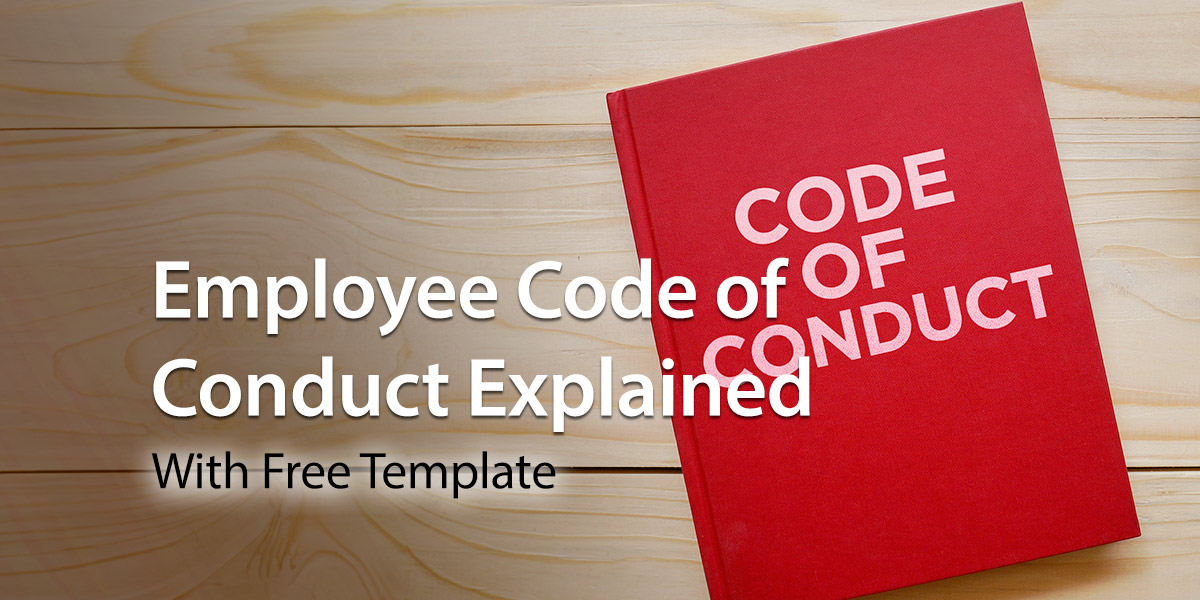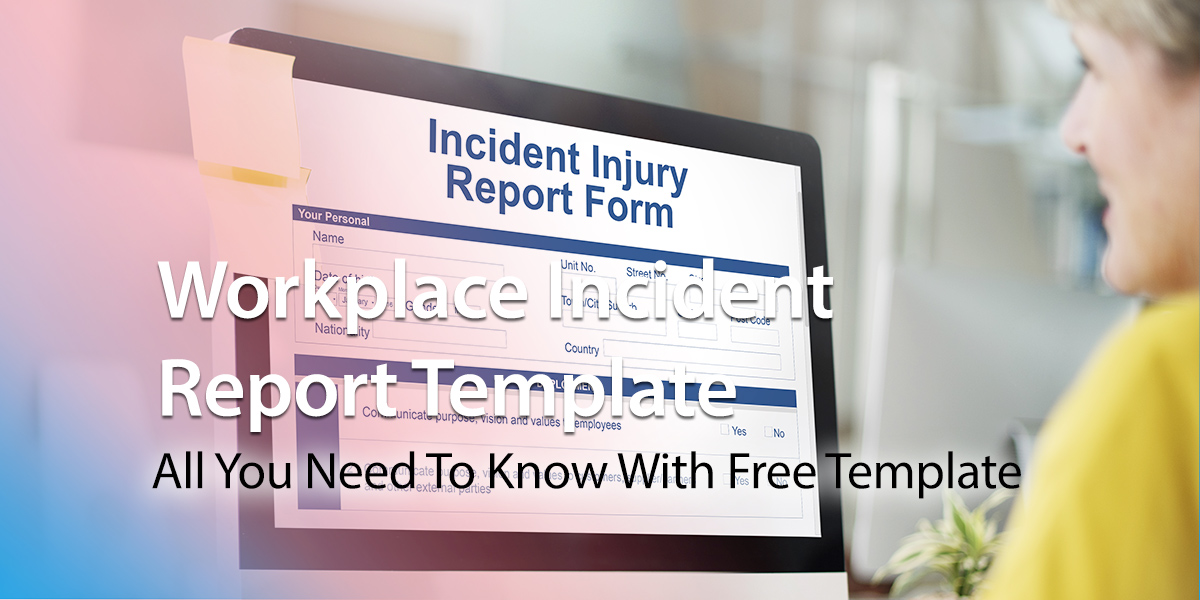When it comes to good corporate governance, an employee code of conduct is vital, regardless of company size. It sets out what the company expects from employees in the workplace and takes the guesswork out of the equation. A code of conduct is derived from company values and reflects the corporate culture.
Today’s post walks you through the essential components of an effective code of conduct. We explore the benefits of a written policy and the steps involved in drafting a company’s code. Finally, we share an employee code of conduct template. Use this as a starting point and adapt it to suit your core values.
What Is A Code Of Conduct In The Workplace?
An employee code of conduct sets out a company’s core values and mission. And it also defines expectations around day-to-day employee behavior. Alongside other company policies, it often forms part of the employee handbook.
A code of conduct helps company employees understand what’s expected of them. And it makes clear the consequences of falling short with details of possible disciplinary action. A code particularly benefits new employees, as it clarifies how colleagues work in your business.
The code is crucial to an organization’s overall compliance and legal policies. Public organizations in the US are required to have a code of conduct. However, it’s also good practice for nonprofits and other types of organizations.
Why Is A Code Of Conduct For Business Important?
A code of conduct is a written statement of your company’s commitment to self-regulation and ethical business conduct. And there are plenty of benefits. Let’s break them down:
Clear And Transparent Expectations Of Employee Behavior
Staff know and understand how to act in the workplace. Dealing with difficult team members or challenging situations is easier if you have specific rules as a starting point. One of the other benefits is that it helps prevent bad decision-making in the workplace by employees.
Sets Benchmarks For Measuring Employee Performance
Setting clear benchmarks makes it easier to ensure employees comply. Managers have something tangible to measure employee performance against. And it enables employees to recognize when their actions fall short or don’t align with business conduct.
Promotes The Company’s Culture
Outlining your company values and how you like to do business is crucial to a robust company culture. A code of conduct means employees feel valued for meeting the company’s standards. And it also positively impacts some of today’s biggest business challenges like recruitment, retention, and employee engagement. After all, ethics and business conduct help to build employee trust and satisfaction.
Furthermore, a code of conduct demonstrates to stakeholders, customers, and investors that standards are important to you.
What Should Be In An Employee Code of Conduct?
Every business is different. While the details will vary depending on your company’s mission and business policies, there are some common elements. A good practice code of conduct includes the following:
- Statement of the company’s mission
- Description of your company values
- Guidelines on how you expect employees to behave
- Advice on how you expect team members to interact with customers and other external or internal party stakeholders
- Relevant workplace policies, for example, workplace harassment and bullying policy
- Appropriate industry regulations
- Consequences for breaching the code of conduct, including disciplinary actions
How Do You Write A Code Of Conduct?
The human resources department is often responsible for all things relating to business ethics. So, it makes sense for human resources to lead in drafting a code of conduct. Many organizations set up a working group, including representatives from management, employees, and stakeholders. In others, senior management and human resources draft the code of conduct, which is then reviewed by a cross-section of employees.
Whatever option you select, the golden rule when developing a company’s code is to stay focused on employees. Write the code of conduct with their needs front of mind. Make it simple and easy to read, and avoid any legal language.
A crucial step in the development process is to review any past ethical issues in your company. You may have had an instance of an employee misuse company equipment or engage in other unlawful behavior. Think about how your business could prevent something similar from happening again. And use that knowledge and experience to inform your code.
Share your draft with employees. Their feedback and insights will help you refine and improve the code of conduct.
Once the code is finalized, make sure it’s publicized and held in an accessible, central location like the intranet. Employees should be able to refer to the code in a timely manner.
What Is An Example Of A Code Of Conduct?
A template is a great way to kickstart developing your own code of conduct. The following example covers all the essential elements. Use it as the starting point for developing a code tailored to your organization.
Code Of Conduct Example For XYZ Company
This employee code of conduct applies to all XYZ employees, including part-time, full-time, and casual workers.
The code is a vital company policy and reflects our mission and values:
[Insert details of company mission]
[Insert details on core values]
Introduction
We take our code of conduct seriously and expect employees to show the same commitment to a safe environment. As stated in every worker’s employment contract, all employees must follow the code of conduct when performing their job duties.
If you have any concerns about the conduct of co-workers and managers or our commitment to the code, we encourage you to speak up. Please talk with your immediate supervisor or the human resources department.
The following sections outline the specific rules and expectations covered by the code of conduct.
Compliance With The Law
Employees are expected to uphold the company’s legality by meeting environmental, safety, and fair dealing laws. You should be ethical and responsible when dealing with company property, resources, and financial transactions.
Respect In The Workplace
We do not tolerate discriminatory behavior, harassment, or bullying. Employees must conform to our equal opportunity policy when carrying out their job duties. [Include reference to other policies, such as sexual harassment, anti-discrimination, and workplace bullying, as appropriate.]
Safeguarding Company Resources
Employees should care for and respect XYZ company’s property. Workers must not misuse company equipment or their company email address.
Moreover, employees should respect our incorporeal property, which includes trademarks, copyright, and other intellectual property.
Workers should endeavor to protect the company’s material property, such as company cars, laptops, and equipment, from damage or vandalism.
Those employees handling confidential information agree to follow the company’s data protection guidelines. Safeguarding sensitive information is a priority, and employees are expected to play their part.
Professionalism At Work
All employees should be professional and act with integrity when performing their duties. Being professional includes the following:
- Personal appearance: All team members must follow our dress code and present a professional personal appearance as appropriate to their job duties.
- Bribery and corruption: Accepting gifts or bribes is not allowed in any circumstances.
- Job duties and relationships with customers and co-workers: Respect and integrity are important aspects of professionalism. Managers mustn’t abuse their position and authority. And employees should follow team leaders’ instructions when performing their duties. Employees should be respectful, polite, and helpful when dealing with their colleagues, customers, or stakeholders.
- Employee tardiness and absenteeism: Workers should stick to their agreed working hours and turn up on time. Employees must notify their supervisor promptly if they cannot come to work. Team members taking unauthorized time off is not allowed. Effective tracking hours, facilitated by appropriate tools and systems for tracking employee hours, can help organizations ensure compliance with these policies and promptly address any attendance issues that may arise, promoting a culture of punctuality and accountability.
- Conflicts of interest: Employees should not engage in personal, financial, or other interests that may get in the way of job performance. Any potential conflicts should be discussed with the manager.
- Collaboration: Team members are expected to work together to achieve company goals. Disruptive behavior is not acceptable.
- Communication: Good communication is vital to everything that we do. Employees should follow the guidance in the company policy on internal communications.
- Employment benefits: Employees must not abuse their employment benefits, including vacations, sick leave, company cars, or other benefits.
- Company policies: Workers are expected to follow all company procedures and policies. Ask your supervisor or the human resources department for help and advice if you have any questions.
Industry Regulations
[Insert details of any relevant industry regulations covering your organization]
Code Of Conduct Disciplinary Actions
XYZ may take disciplinary actions against employees who do not follow the code’s requirements to ensure compliance. The action taken will vary depending on the seriousness and frequency. Options include the following:
- Verbal or written warning
- Reduction of employee benefits
- Demotion
- Suspension from work
- Termination of employment for serious offenses
We may also take legal action in cases involving corruption, theft, embezzlement, or other serious incidents.
Note: This code of conduct template is not a legal document and offers broad guidelines only. It may not take account of all local, state, and federal laws. MyHub does not accept any legal liability that may arise from using this template.
Code Of Conduct vs. Code Of Ethics – What’s The Difference?
A code of ethics is often confused with a code of conduct. Let’s finish by clearing up any misunderstanding.
Although there’s some overlap between the two, a code of ethics is more high-level and sets out principles and morals. It aims to guide decision-making and provides an overall organization framework.
By contrast, a code of conduct focuses on compliance and rules. It tells employees how they should act in their daily work to reflect the broader ethical principles.
For example, a code of ethics might say that employees should treat each other with respect and kindness. The code of conduct identifies enforceable rules to satisfy those expectations.
Employee Code Of Conduct: Quick Summary
A code of conduct identifies the standards relating to employee conduct in the workplace. It’s a valuable tool to prevent employees from making bad decisions or slipping into tardiness. Whether it’s a specific dress code or protecting company resources, employees know what they have to do.
Furthermore, it confirms your commitment to ethical business practices and self-regulation to stakeholders, customers, and potential employees.
A template is a helpful tool to get started. Use our best practice code of conduct example and adapt it to suit your organization.
According to one study, 82 percent of company employees with codes of conduct or ethics reported that it makes their organization a better place to work. With recruitment and retention continuing to be challenging for businesses, that’s another compelling reason to get started.
About MyHub
We provide cloud-hosted intranet solutions to businesses of all sizes and markets across the globe. Designed by experts for non-experts, our platforms are super-easy to deploy and manage. Under one virtual roof are all the tools you need for success in today’s digital workplace. Find out more with a free demo or 14-day trial.
And why not subscribe to our blog for more insightful discussions on all the latest hot business topics.










